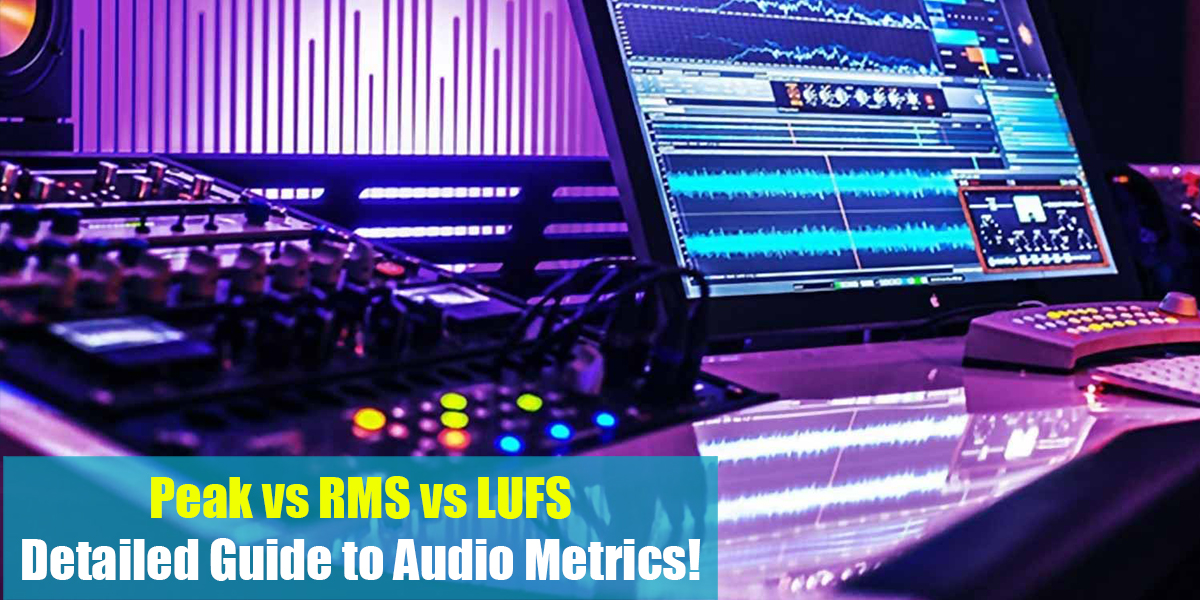What is Passive EQ
Introduction
For those of us just getting started with music production, EQ can be a confusing term. EQ stands for equalization, and in music, it refers to a plugin or hardware tool that helps you shape the frequency content of your recordings. This process allows all the elements of your production to fit together more smoothly. Every note an instrument plays has a fundamental frequency, as well as overtones that create its unique sound and make it recognizable.
Simply put, EQ plugins can be thought of as a group of volume controls, each one affecting a specific range of frequencies. The gain control lets you increase or decrease the volume at the center, corner, or cutoff frequency of a band, depending on the bandwidth or ‘Q’ control for that band.
Here’s our take on passive EQing. In general, audio equalization is a ‘lossy’ process, meaning some signal level is lost during the process. To put it simply, filter circuits act as frequency-selective attenuators, reducing the signal level above or below a set frequency.
So, if you want to make a simple cut-only equalizer, it’s easy to do using passive components. These components—capacitors, inductors, and resistors—need to be chosen carefully to get the right turnover frequencies and slopes. This design doesn’t require power, but the types of EQ you can achieve are limited to basic high- and low-pass filters, and simple band-pass filters with gentle slopes.
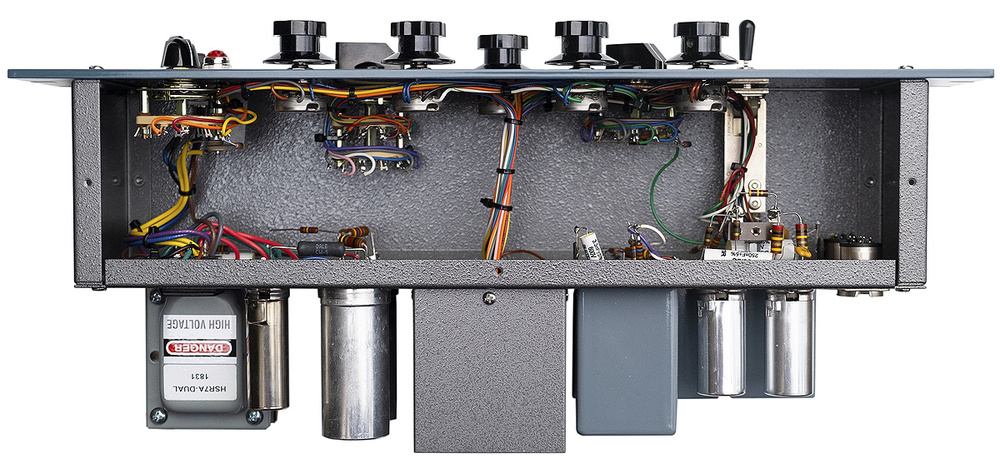
How Does Passive EQ Work?
Unlike active equalizers, which use transistors, amplifiers, or tubes, passive equalizers rely solely on passive electronic components—such as resistors, capacitors, and inductors—to shape tone. These EQs use no powered components to create tonal changes. Because only passive parts are involved, a make-up amplifier is needed to restore the EQ’d signal to its original level.
One clear advantage of passive EQs is their simplicity. For example, a passive filter might require just five components, whereas an active EQ circuit could contain more than a dozen transistors, advanced op-amps, tubes, capacitors, and resistors.
Generally, passive circuits are less likely to smear transient frequency responses, introduce distortion, or create unwanted colorations compared to active circuits. When it comes to tone shaping, passive EQs offer a higher degree of precision with far less coloration.
Passive EQs use inductive components to shape tone. Inductors—coils of wire that create electrical inductance—have a resistance that changes with frequency. In a filter or equalizer, inductors not only help shape the sound but can also add a pleasing musical quality. Many people enjoy the sound of saturating inductors because they behave similarly to transformers.
With a well-designed inductor-based filter, high frequencies can be enhanced without introducing harshness or sibilance, and low frequencies can become fatter and richer in harmonics. As inductors reach saturation, they act as frequency-based limiters, preventing further saturation. This allows for the creation of shelving, bell, or parametric filters that deliver incredibly musical boosts and cuts.

When To Use Passive EQing?
In addition to vocals and electric guitars, passive EQs are also great for live strings, pianos, and other acoustic instruments, as well as for mastering. They typically deliver smooth highs without sibilance or harshness, along with warm, broad low-end characteristics. However, passive EQs are not ideal for precise EQ work that requires cleaning up frequencies, since they don’t offer very steep filter curves.
Passive EQs are especially valuable in mastering. In fact, you’ll find a passive EQ in most professional mastering studios around the world. These EQs, along with other passive models, are extremely useful for mastering because they let you make broad, sweeping changes to the mix without introducing phase distortion. They also provide a much more natural sound, helping a mix retain its musicality even with subtle adjustments.
Besides mastering, you can also use passive EQs during the mixing process. They allow you to trim both the input and output signals and help protect against extreme settings that could damage the signal.
Now, let’s take a look at some hardware passive EQs and plugin alternatives you can try. This way, you can experiment with passive EQs in your mixes, alongside the more common active or dynamic EQs.
Manley Massive Passive
As a manufacturer of high-quality outboard equipment, Manley has built a strong reputation. The attention to detail in this project is remarkable—the manuals are not only informative but also enjoyable to read, and the sound quality is truly outstanding.
Instead of chasing artificial numerical targets for bandwidth or boost levels, Manley has carefully chosen components designed to interact musically. Unlike most EQs that rely on a large number of transistors, the Massive Passive uses a blend of metal film resistors, film capacitors, and hand-wound inductors to shape its unique sound.
Tube gain stages are used in the restorative gain circuits. Each channel features its own tube amplifier, with the valves operating at over 300 volts DC. The output can deliver up to 37dBu cleanly.
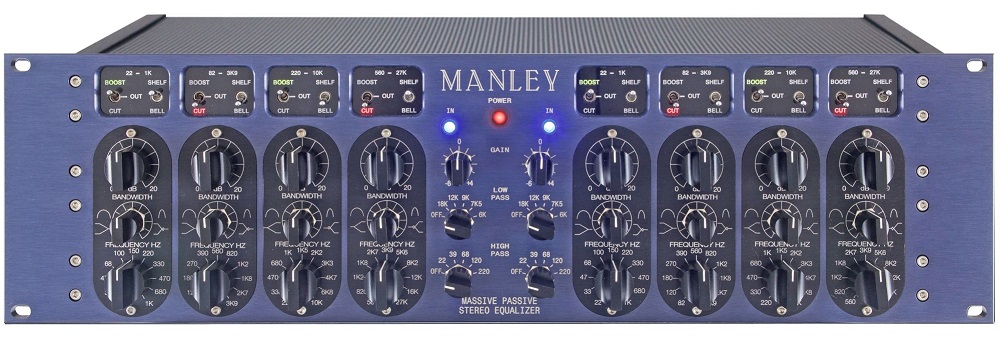
Manley Massive Passive |
Bettermaker Stereo Passive Equalizer
The Bettermaker Stereo Passive Equalizer is a Pultec-style, 2U rackmount unit with a fully refined analog signal path. This equalizer can be controlled from your DAW and has full digital memory capability. It features a pure analog signal path, low frequency cut and boost, high frequency cut and boost, high boost bandwidth control, and adjustable output levels.
This Pultec-inspired passive tube equalizer connects to a Mac or PC via USB and can be managed directly from a DAW plug-in. This allows you to save and recall presets, as well as automate parameters. Despite these digital controls, the SPE maintains a 100% analog signal path for top-tier audio quality.
The unit has an elegant design and a very clear layout. The left side of the front panel controls the low frequencies, while the right side manages the highs. As you may know, Pultec-style EQs are known for their ability to simultaneously boost and cut within the high and low-frequency ranges.

Bettermaker Stereo Passive Equalizer |
For the full review, head over to this link here!
Heritage Audio MotorCity EQualizer
The MotorCity EQualizer is a fully analog, passive EQ with seven selectable frequency points spread across the tonal spectrum. With its 10-gauge hand-brushed aluminum faceplate and authentically styled controls—including custom-molded Bakelite knobs—the MotorCity Equalizer looks every bit the classic piece it aims to be.
The Heritage Audio MOTORCITY EQ features a UTC replica input transformer, modified with a new turns ratio for smoother integration with modern systems. On the output side, Heritage Audio chose a Carnhill-driven output line amp instead of the original Opamp Labs design, which was known for being somewhat unreliable.
Most importantly, the unique passive equalization circuit is faithfully recreated, using custom-built, mil-spec 1960s tone capacitors and inductors. The Heritage Audio MOTORCITY Equalizer delivers the same unmistakably big, punchy, and warm signature sound, making this EQ as iconic as the legendary hits it helped shape.

Heritage Audio MotorCity EQualizer |
Check the full review on the link here!
Now we will share what we think are the top 3 best passive EQ plugins you can get for your in-the-box mixing and mastering.
Pulsar Massive
In most mastering studios around the world, the Manley Massive Passive EQ is a staple in the mastering process. Pulsar Massive is an emulation of this legendary hardware. Not only does it combine the best features of passive equalizers from the last 70 years into one unit, but it also introduces unique characteristics that give it a truly unmatched sound.
One key feature is its fully parallel EQ topology, which produces a response that is entirely different from a digital equalizer set to the same settings. Unlike cumulative equalizers, the tonal adjustments made with a parallel equalizer interact with each other, allowing you to shape the frequency spectrum in a more intuitive and fluid way.
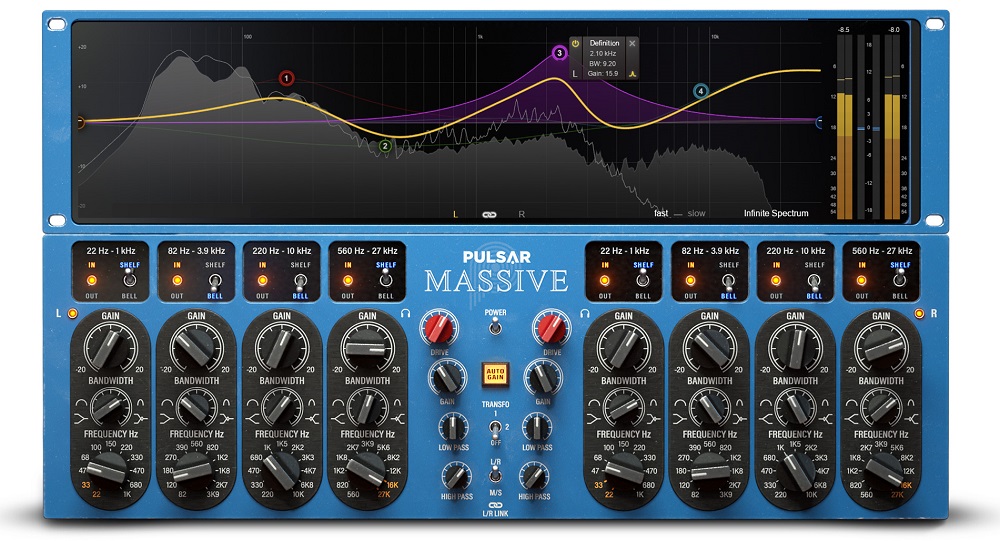
SPL Passeq
The original Passeq hardware is an impressive feat of engineering, both in terms of its physical presence and its price tag. Fortunately, SPL’s Analog Code series offers the Passeq plug-in (VST, AU, RTAS) for those of us who have limited budgets or rack space.
At first glance, the Passeq’s layout can seem intimidating, but once you get used to its basic structure, it quickly becomes second nature. The cut filters are positioned on the left and the boost filters on the right of the attenuator, with the frequency bands divided into two groups.
By bringing a digital version of the Passeq to life at an affordable price, SPL has reimagined what the hardware Passeq can be.
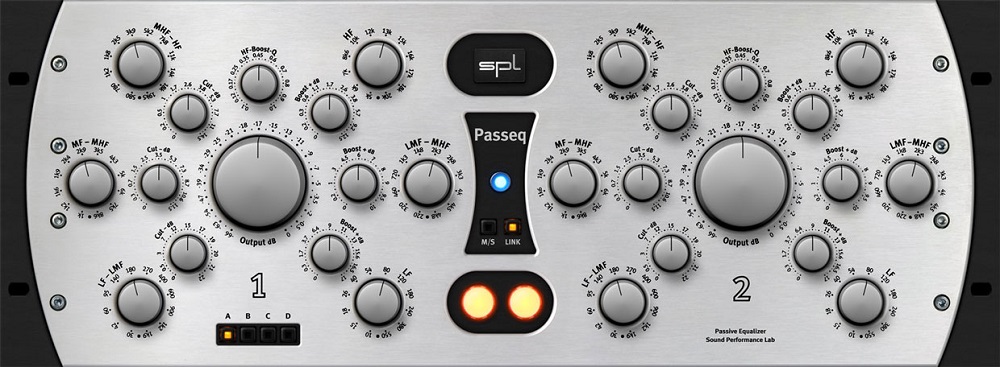
NI Passive EQ
When it comes to flexibility, the Passive EQ is second to none. Even when pushed to extreme settings, it’s hard to damage the signal when using it as a master bus EQ. While experienced engineers often prefer cutting frequencies over boosting them, this EQ truly shines when boosting. You can dial in a beautiful, subtle saturation in the upper mids when you push it a bit harder.
The Passive EQ expands on the classic EQ design, bearing a strong resemblance to the legendary Manley Massive Passive. It offers notched frequencies and a sweepable bandwidth, with four bands arranged in parallel for maximum versatility.
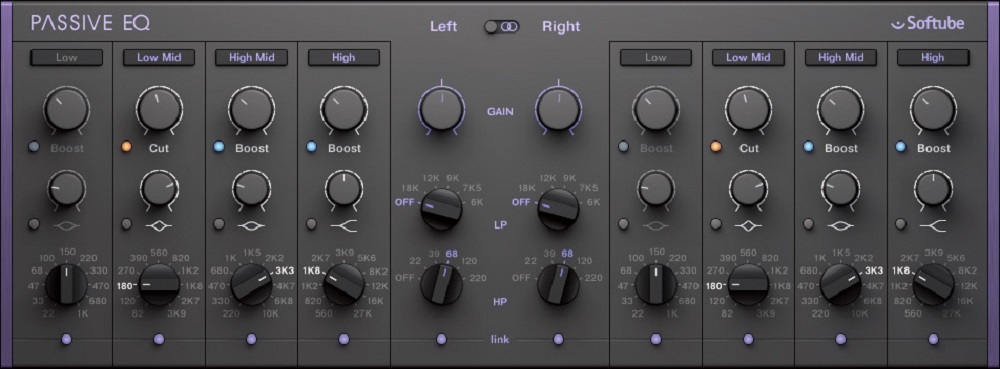
Conclusion
We believe we’ve covered all the essentials and explained how to use passive EQs. We’ve also provided a selection of both hardware units and plugins you can use for your audio processing needs.
Whether you’re cutting or boosting frequencies, a passive EQ will add its unique character to your mix and help you during both mixing and mastering sessions. These EQs have the same parameters as active circuit models—select frequency, Q, boost or cut, and makeup gain—but their construction sets them apart from the rest.
If you have any questions about this topic, feel free to ask in the comment section below—we’re always happy to help!


